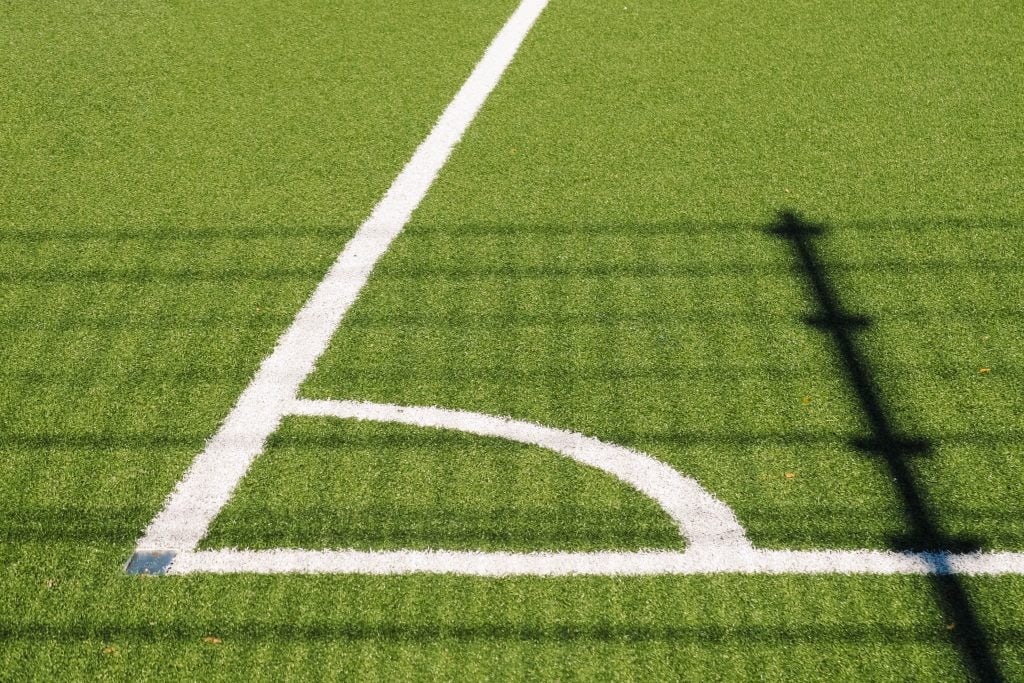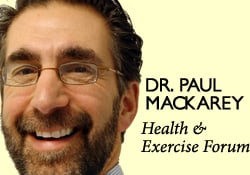Summer football training camps and practice sessions are in full swing in Northeastern Pennsylvania. A few years ago, the Pennsylvania Interscholastic Athletic Association (PIAA) implemented “Preseason Heat-Acclimatization Guidelines” This policy is slightly updated for starting dates each year (www.piaa.org).
At this time each year, I receive several emails from concerned parents regarding heat stroke in football players and hopefully this column will serve to educate coaches, players and parents about the importance of heatstroke prevention.
Most medical professionals agree that the amount of protective equipment worn by football players makes them more susceptible to heat stroke than athletes in other sports. It is also well-accepted that prevention is the best treatment for heat stroke. They feel that overweight and poorly conditioned players should be monitored closely by weighing in before and after practice. A player who loses more than 3% body weight is at risk for heat stroke. These players should be required to take more breaks, with more fluid intake before, during and after practice. Heat stroke one of the most serious heat-related illnesses. Heat stroke is caused by long term exposure to the sun to the point which a person cannot sweat enough to lower the body temperature. The elderly and infants are most susceptible as are athletes wearing full gear and protective equipment. It can be fatal if not managed properly and immediately. Believe it or not, the exact cause of heatstroke is unclear. Prevention is the best treatment because it can strike suddenly and without warning. It can also occur in non athletes at outdoor concerts, outdoor carnivals or back yard activities. The American Academy of Pediatrics and The American College of Sports Medicine has the following recommendations:
Signs of Heatstroke:
Heat Exhaustion – can be a precursor to heat stroke
- Signs: cramps, weakness, fatigue, nausea
- Treatment: rest in shade, cool down with cool (not cold) towels, and drink plenty of fluids.
- Core Body Temperature above 105 degrees Fahrenheit
- Hot, dry skin – flushed but not sweaty
- Lack of sweating **NOTE: athletes often have external heatstroke and they can sweat even with an increase core temperature
- Very rapid pulse
- Mental confusion, disorientation or hallucinations
- Physical clumsiness, sluggishness or fatigue
- Seizure
- Dizziness
Treatment of Heatstroke:
- CALL 911 – Remember this may be life-threatening
- Relocate Athlete – to a cool shady place or air-conditioned indoors and lie down with slight elevation of feet
- Undress – Remove outer garments and roll onto side to expose as much skin as possible to the air
- Cool Down – spray or sponge with cool water (not cold) and fan athlete
- Ice – place ice packs to the groin, neck and armpits to cool down large blood vessels. No ice bath.
- Core Temperature – is the only accurate measurement so medical personnel may take rectal temp if necessary. Must get core temp to 102 degrees Fahrenheit ASAP.
- Begin CPR – if breathing stops
- No Aspirin or Acetaminophen – to decrease temp
- Administer Fluids – if person is alert enough to swallow give 32 to 64 oz over 1-2 hours
Prevention of Heatstroke:
Gradual Acclimatization to Heat – REFER TO PIAA HEAT-ACCLIMATIZATION Source: www.piaa.org
- Get used to the heat gradually. Begin short conditioning sessions in early summer. Have shorter and less intense practices for the first 7-10 days. If athlete recently had the flu or an illness with a temperature, keep them home for a while and gradually introduce the heat and humidity with short periods of exercise. They are at increased risk for heat stroke.
- Humidity Index (RI) – Be very aware of the temperature (T) and the relative humidity (RH). RI = T + RH. If the sum of the temperature and relative humidity are greater than or equal to 160, take serious precautions (short sessions in early morning or evening, shorts and half pads, plenty of water and sports drinks etc). If the sum of T and RH are greater than 180, practice and/or games should be canceled.
- Take Frequent Breaks – 15 minutes after each hour if T & RH is equal to or greater than 160. Rest in shaded areas, helmets off, jerseys loosened or off.
- Unlimited Cold Water – should be available at all times. Mandatory scheduled water breaks every 15-20 minutes. Break in a shaded area and water down your head, neck etc to cool down. Guidelines: 16 oz 2 hours prior to activity, ½ water bottle every break, after practice continue drinking 1 cup per hour for 4-5 hours, avoid caffeine drinks (can dehydrate), avoid carbonated drinks (bloating will limit water intake) and avoid alcohol.
- Electrolyte Sports Drinks – are very helpful to replace electrolyte loss. DO NOT USE SALT TABLETS. Generously season food and use sports drinks instead.
- Dress For Heat – use drytecR type material under your pads to wick sweat away from body and change shirts at break. Wear light colors. Use fishnet jerseys over your pads to keep cool. Remove helmets often in hot weather.
- Medical Files - keep an index of individual athletes with medical problems or history for problems, especially those at risk for heat related problems. Certain medications may put an athlete at risk for heat stroke. Pay special attention to those players.
- Keep Alert – coaches, parents, players must be on the lookout for signs of a problem in themselves and their teammates such as fatigue, lethargy, inattention, stupor, and loss of coordination. Remove the athlete from the field, cool down in shade with cool (not cold) damp towel/blanket, seek medical attention.
DO NOT IGNORE SIGNS OF PLAYER DISTRESS OR POOR PRACTICE MANAGEMENT – YOU MAY SAVE A LIFE! – If you witness signs of a player in distress or signs of poor practice management that may jeopardize the health of an athlete, diplomatically speak up. Use references to educate those in charge to recognize there mistakes and improve conditions. Problems occur not because of malice, but usually because of ignorance.
NEXT MONDAY – Read Dr. Paul J. Mackarey “Health & Exercise Forum!”
This article is not intended as a substitute for medical treatment. If you have questions related to your medical condition, please contact your family physician. For further inquires related to this topic email: drpmackarey@msn.com
Paul J. Mackarey PT, DHSc, OCS is a Doctor in Health Sciences specializing in orthopaedic and sports physical therapy. Dr. Mackarey is in private practice and is an associate professor of clinical medicine at GCSOM.

